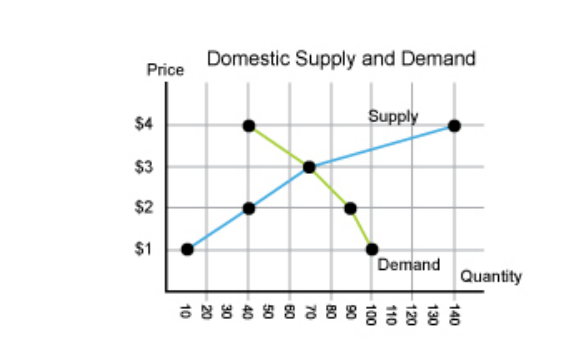- 翰林提供学术活动、国际课程、科研项目一站式留学背景提升服务!
- 400 888 0080
nec竞赛国际经济和时事真题及解析
Nationa Economics Chellenge,nec学术活动国际经济和时事真题提供给大家,本文主要提供的是International-Current-Events相关试题,因为篇幅有限,可以直接扫码领取全部(有答案):

1. According to Marxist theory, after the dictatorship of the proletariat and the withering
away of the state have taken place, private property would
A. be returned to the rightful owners of the property before the revolution.
B. be controlled by a government elected by the workers' party.
C. serve as a taxable base to help the neediest in society.
D. provide incentives for central planners to use the property efficiently.
E. not exist; there would be communal ownership of property.
2. The theory of decreasing marginal utility (decreasing marginal value) implies that
individuals will
A. spend less of their income on necessities as consumer incomes increase.
B. place the most value on the goods for which they are the lowest cost producers.
C. value the third hamburger they consume less than the second.
D. value the tenth hamburger they consume more than the ninth.
E. produce fewer products on the margin as more workers are hired.
3. According to the principle of the invisible hand,
A. everyone acting in his or her self interest leads to the best outcomes for society.
B. government must carefully guide economic activity to reach the best outcomes for
society.
C. government policies work like an invisible handle on a safe to protect valuable
resources.
D. producers must cooperate with each other so that low prices do not lead to negative
profits.
E. when everyone intentionally pursues the best outcomes for society, they are guided
to help the neediest people the most.
4. According to the Coase theorem,
A. government should charge value-added taxes on firms that produce public goods.
B. government spending should replace taxation to balance the federal budget.
C. coastal properties should be protected from development.
D. under certain conditions, semi-public goods such as libraries can be provided
efficiently by the government.
E. under certain conditions, bargaining between private parties can solve externality
problems.
5. "The government bailed out banks that were in financial trouble because they made
risky loans to borrowers who could not repay the loans. Banks therefore had
incentives to make more risky loans because they expected government bailouts if they
got in financial trouble again." Which of the following best describes these statements?
A. adverse selection
B. symmetrical information
C. public choice
D. moral hazard
E. Herfindahl index
Directions: Use the graph below to answer questions 6, 7, and 8. The graph shows the domestic supply and demand for gadgets, a standardized product, in the small country of Econia.

6. If the world price for gadgets were $4 and there were no trade restrictions, Econia
would have a domestic
A. surplus of 100 gadgets, and would import 100 gadgets.
B. surplus of 100 gadgets, and would export 100 gadgets.
C. equilibrium of gadgets, and would neither import nor export gadgets.
D. shortage of 100 gadgets, and would import 100 gadgets.
E. shortage of 100 gadgets, and would export 100 gadgets.
7. If the world price for gadgets were $1 and there were no trade restrictions, Econia
would produce _____ gadgets and foreign producers would export ______ gadgets to
Econia.
A. 10; 90
B. 90; 10
C. 40; 90
D. 100; 0
E. 0; 10
8. If the world price for gadgets were $1 and a per-unit tariff of $1 was imposed on the
sale of gadgets in Econia, consumers would pay a price of _________. The total
quantity of gadgets sold would be _________, and the total amount of tariff collected
on gadgets would be ________.
A. $1; 100; $100
B. $1; 70; $50
C. $2; 90; $50
D. $2; 40, $80
E. $3; 70; $70
Directions: Use the information below to answer question 9.
APC = average propensity to consume
APS = average propensity to save
MPC = marginal propensity to consume
MPS = marginal propensity to save
9. Which of the following is not necessarily true?
A. MPC + MPS = 1
B. APC = MPC
C. APC + APS = 1
D. APC + APS = MPC + MPS
E. If APC is falling as income increases, MPC is less than APC
10. If taxpayers with a greater ability to pay are required to pay more taxes than those with
less ability to pay, this is an example of what economists call
A. a proportional tax.
B. horizontal equity.
C. a social security tax.
D. vertical equity.
E. the benefits received principle.
Directions: The table below shows the production possibilities for Country X and Country Y. Use the
information provided in this table to answer questions 11, 12, and 13.

11. According to the data in the table, the opportunity cost of producing steel is _______
in Country X and ___________ in Country Y. The opportunity cost of producing
bananas is ______ in Country X and ________ in Country Y. (All quantities are in
tons)
A. 1/5 banana; 1/3 banana; 5 steel; 3 steel
B. 1/3 banana; 5 bananas; 3 steel; 1/3 steel
C. 5 steel; 1/5 steel; 3 bananas; 1/3 bananas
D. 1/5 banana; 1/3 banana; 3 steel; 5 steel
E. 3 steel; 5 bananas; 1 banana; 3 steel
12. If both countries specialize completely according to their comparative advantage, which
of the following is true? (All quantities are in tons.)
A. Country X will produce 8 steel and Country Y will produce 48 bananas.
B. Country X will produce 40 steel and Country Y will produce 16 bananas.
C. Country X will produce 0 steel and Country Y will produce 0 bananas.
D. Country X will produce 40 bananas and Country Y will produce 48 steel.
E. Country X will produce 4 steel and 20 bananas, and Country Y will produce 8
bananas and 24 steel.
13. Assuming that both countries specialize where they have the comparative advantage,
which of the following are possible terms of trade between Country X and Country Y
that would benefit both countries?
A. 1 ton of bananas for 1 ton of steel
B. 1 ton of bananas for 2 tons of steel
C. 1 ton of bananas for 6 tons of steel
D. 1 ton of bananas for 4 tons of steel
E. 1 ton of bananas for 8 tons of steel
14. Under a system of freely floating exchange rates, if the US has a trade deficit with China,
this should cause the dollar to __________ and the Chinese renminbi (yuan) to
___________ in foreign exchange markets.
A. not change; appreciate
B. appreciate; depreciate
C. depreciate; appreciate
D. depreciate; depreciate
E. depreciate; not change
Directions: Use the graph below, which shows a Lorenz curve for a certain country, to answer question

15.The Gini coefficient (ratio) for this country can be computed by using the formula
A. 100 x 100 / 50
B. ½ (100 x 100)
C. Area X + Area Y
D. Area X + Area Y / 1002
E. Area X / (Area X + Area Y)

最新发布
© 2025. All Rights Reserved. 沪ICP备2023009024号-1









